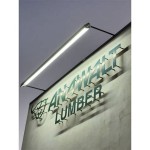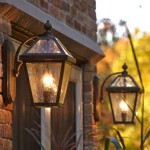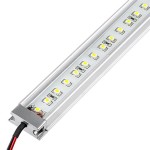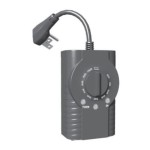Pictures of Outdoor Landscape Lighting in Japan: A Study in Harmony and Subtlety
Japanese landscape lighting represents a distinct approach to illuminating outdoor spaces, emphasizing harmony, tranquility, and the appreciation of natural forms. Unlike some Western styles that prioritize brightness and comprehensive illumination, Japanese landscape lighting often focuses on creating subtle, evocative atmospheres. The use of carefully positioned light sources, often concealed or integrated within the landscape, aims to enhance the existing beauty of gardens, pathways, and architectural features, rather than overpowering them. This results in outdoor spaces that are not only functional but also aesthetically pleasing and emotionally engaging.
The philosophy behind Japanese landscape lighting is deeply rooted in the country's cultural values, which prioritize minimalism, respect for nature, and the understanding of impermanence. The concept of "wabi-sabi," which finds beauty in imperfection and simplicity, is often reflected in the choice of materials, the design of fixtures, and the overall lighting scheme. The intention is to create spaces that evoke a sense of peace and contemplation, inviting individuals to connect with the natural world in a meaningful way. This requires a deep understanding of both the artistic principles of landscape design and the technical aspects of lighting technology.
The following sections will explore key characteristics of Japanese landscape lighting, examining specific elements and techniques that contribute to its unique aesthetic.
Emphasizing Natural Forms with Soft Light
One of the defining characteristics of Japanese landscape lighting is its emphasis on highlighting natural forms using soft, diffused light. Instead of broadly illuminating entire areas, the focus is on selectively accentuating specific features, such as trees, rocks, water features, and architectural details. This selective illumination draws attention to the inherent beauty of these elements, creating a sense of depth and dimension within the landscape.
The use of soft light is crucial to achieving this effect. Harsh, bright light can flatten the landscape and create an unnatural appearance. Soft light, on the other hand, gently grazes the surfaces of objects, revealing their textures and contours. This is often achieved through the use of strategically placed fixtures that emit a warm, subtle glow. Diffusers, such as frosted glass or textured plastic, are often used to further soften the light and minimize glare. The goal is to create a lighting effect that feels natural and unobtrusive, as if the landscape is gently illuminated by moonlight.
Specific examples of this technique include the use of uplighting to highlight the delicate branches of a Japanese maple, or the placement of submerged lights to create shimmering reflections on the surface of a pond. Ground-level path lights, often concealed amongst the foliage, provide subtle guidance without drawing attention to themselves. The intention is to create a layered lighting effect, where different elements of the landscape are illuminated at varying levels of intensity, creating a sense of depth and visual interest. This requires carefully considering the placement and angle of each light fixture to achieve the desired effect.
The careful selection of light color temperature is also important. Warmer color temperatures, such as those in the range of 2700K to 3000K, are commonly used in Japanese landscape lighting to create a cozy and inviting atmosphere. These warmer tones complement the natural colors of the landscape and evoke a sense of tranquility. Cool color temperatures, on the other hand, can feel harsh and sterile, potentially detracting from the overall aesthetic.
The Strategic Use of Shadow and Contrast
While effective lighting is about illuminating specific features, an equally important aspect of Japanese landscape lighting is the strategic use of shadow and contrast. By carefully controlling the areas of light and dark, designers can create a sense of mystery and intrigue, enhancing the overall visual impact of the landscape. Shadows are not simply viewed as the absence of light, but rather as an integral part of the design, contributing to the overall aesthetic and creating a sense of depth and dimension.
The interplay of light and shadow can be used to create a sense of drama and visual interest. For example, the silhouetted branches of a tree against a softly illuminated wall can create a striking visual effect. The contrast between light and dark can also be used to guide the eye through the landscape, drawing attention to specific features and creating a sense of movement. The strategic placement of light fixtures can create interesting patterns of light and shadow on the ground, adding another layer of visual complexity to the design.
The use of layered lighting is essential to achieving a nuanced balance of light and shadow. By illuminating different elements of the landscape at varying levels of intensity, designers can create a rich and dynamic interplay of light and dark. This requires carefully considering the size, shape, and texture of each object in the landscape, and selecting the appropriate lighting techniques to highlight its unique characteristics.
Furthermore, the concept of "yin and yang," which emphasizes the balance of opposing forces, is often reflected in the use of light and shadow in Japanese landscape lighting. The intention is to create a harmonious balance between light and dark, creating a sense of equilibrium and tranquility. This requires a deep understanding of the principles of landscape design, as well as a keen eye for detail.
Integration and Concealment of Light Fixtures
A key principle of Japanese landscape lighting is the integration and concealment of light fixtures. The goal is to create a lighting effect that feels natural and unobtrusive, minimizing the visual impact of the fixtures themselves. The focus should be on the illuminated elements of the landscape, rather than the sources of light. This requires careful planning and the selection of appropriate fixtures that can be seamlessly integrated into the surrounding environment.
There are several techniques that can be used to achieve this effect. One common approach is to conceal light fixtures amongst the foliage, placing them behind plants or shrubs so that they are hidden from view. Another technique is to use recessed lighting, embedding fixtures into the ground or into walls so that they are flush with the surrounding surface. Uplighting techniques can be used to illuminate trees and other vertical elements from below, concealing the light source at ground level. Path lights are often designed to be low-profile and unobtrusive, blending seamlessly into the landscape.
The choice of materials for light fixtures is also important. Natural materials, such as stone, wood, and copper, are often preferred because they blend seamlessly into the landscape. Fixtures made from these materials can be easily camouflaged amongst the surrounding vegetation. The use of dark or muted colors can also help to minimize the visual impact of the fixtures. The goal is to select fixtures that are both functional and aesthetically pleasing, complementing the overall design of the landscape.
The placement of cables and wires is also carefully considered to minimize their visibility. Cables are often buried underground or concealed behind walls or other structures. The use of low-voltage lighting systems can also help to reduce the size and number of cables required. The intention is to create a clean and uncluttered appearance, where the focus is on the illuminated elements of the landscape, rather than the technical aspects of the lighting system. This requires careful planning and attention to detail, as well as a deep understanding of both landscape design and lighting technology.
Beyond the technical aspects, the philosophy of "less is more" often guides the approach to fixture selection and placement. The emphasis is on using only the necessary amount of light to achieve the desired effect, avoiding unnecessary brightness or excessive ornamentation. This minimalist approach reflects the Japanese cultural value of simplicity and restraint, creating outdoor spaces that are both functional and aesthetically pleasing. The overall aim is to enhance the inherent beauty of the landscape, creating a sense of peace and tranquility.
In conclusion, Japanese landscape lighting offers a unique perspective on illuminating outdoor spaces, prioritizing harmony, subtlety, and the appreciation of nature. The techniques employed, from the use of soft light and strategic shadow play to the integration and concealment of fixtures, all contribute to creating spaces that are both functional and aesthetically engaging, reflecting a deep respect for the natural world.

15 Cozy Japanese Courtyard Garden Suggestions Landscape Design

Check How To Light Up Your Garden With Style We Ve Gathered Some Examples That Will Inspire You For More Examp Japan Zen Design Japanese

The Number One Secret Behind Japanese Garden Design

Asian Interior 屋外の庭園 日本庭園 庭

Contemporary Japanese Garden In The English Countryside Lan Design London Rooftop Planters

Asian And Oriental Influenced Landscape Lighting Deep Discount

Outdoor Lighting For Landscaping Projects Japanese Garden Design

Outdoor Entertaining Japanese Style Articles

Magical Lighted Park Okayama Japan Outdoor Event Lighting

Bailey Oriental Japanese Inspired Stainless Steel Decorative Mountain Ip54 Outdoor Wall Light Round Rectangular







